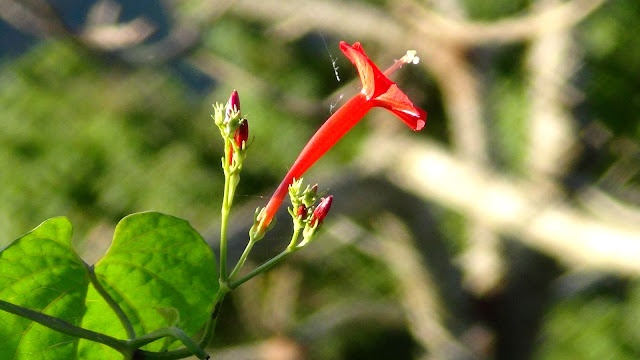Shidur kolmi or Scarlet morning glory, Ipomoea hederifolia
Shidur kolmi or Scarlet morning glory (Ipomoea hederifolia, family: Convolvulaceae) is an annual twiner with narrow and weak stem. It is originated in tropical and subtropical America. In Bangladesh, it is naturalised mainly in the wild areas of Chattogram Hiil Tracts.
Other names: Shurjokanti, Lal morning glory (Bang.); Scarlet creeper, Star ipomoea, Ivy-leaved morning glory (Eng).
Flowers are in terminal or axillary cymes, usually 1-9, scarlet, 3-4 cm long, sepals 5, petals 5, tube narrow; stamens 5, exserted. Flowering occurs in November-March.
Fruit is a capsule, globular. The fast-growing twiner is propagated by seeds. The genus name of the vine 'hederifolia' is derrived from it's Ivy-like leaves. The fruit is a round capsule up to 8 mm in diameter containing a few seeds.
Synonyms: Convolvulus acutangulus, Convolvulus angulatus, Convolvulus hederifolius, Convolvulus luteolus, Convolvulus phoeniceus, Convolvulus sanguineus, Doxema sanguinea, Ipomoea angularis, Ipomoea angulata, Ipomoea brevipedicellata, Ipomoea hephrophylla, Ipomoea luteola, Ipomoea nephrophylla, Ipomoea phoenicea, Ipomoea phoenicea, Ipomoea sanguinea, Mina hederifolia, Quamoclit acutangula, Quamoclit angulata, Quamoclit brevipedicellata, Quamoclit dichotoma, Quamoclit hederifolia, Quamoclit luteola, Quamoclit phoenicea, Quamoclit sanguinea.





Comments
Post a Comment